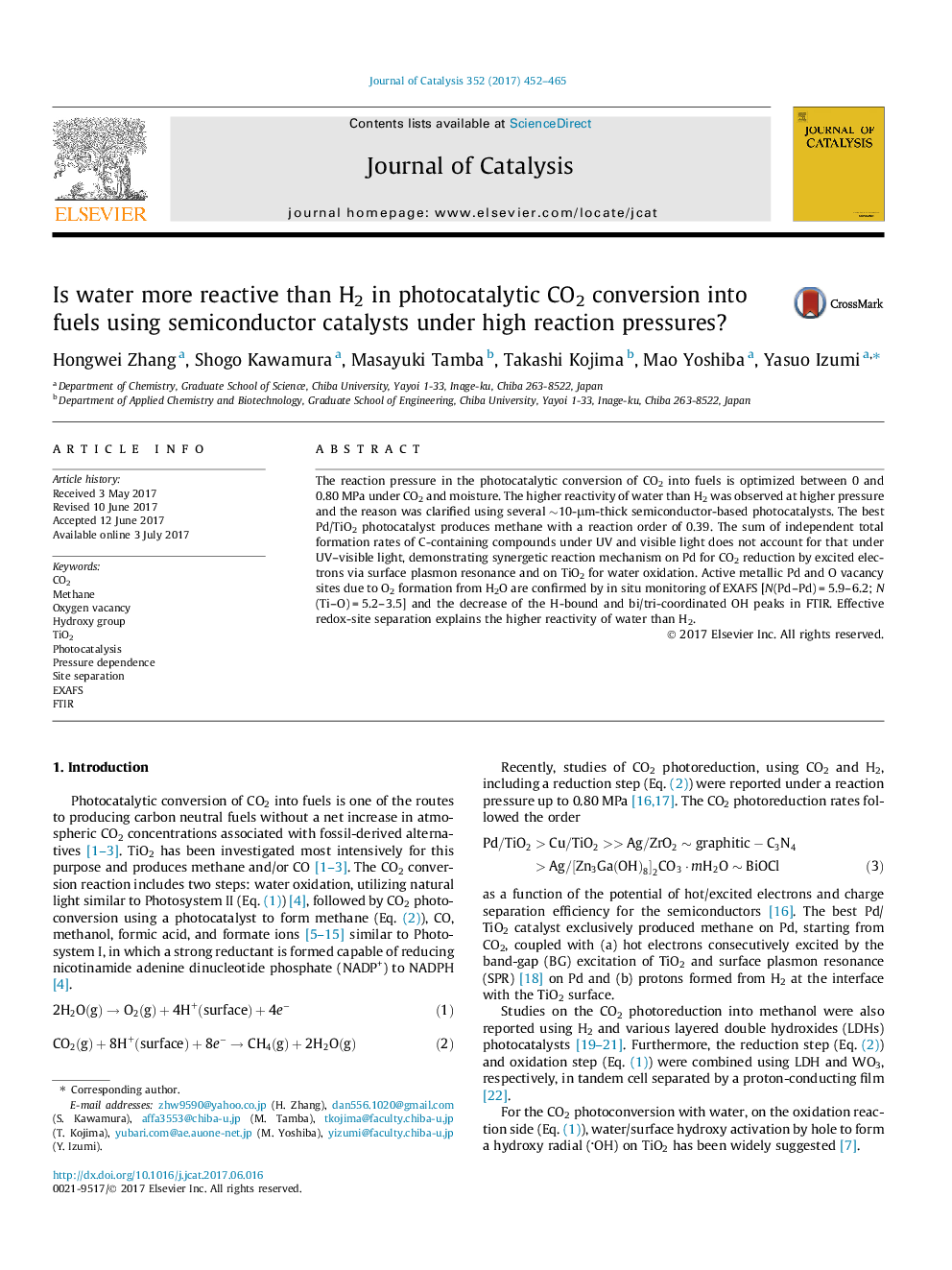| Article ID | Journal | Published Year | Pages | File Type |
|---|---|---|---|---|
| 6455432 | Journal of Catalysis | 2017 | 14 Pages |
â¢CO2 photoconversions by moisture were performed at up to 0.8 MPa.â¢Pd/TiO2 was the most active to form methane and reaction order was 0.39 for CO2.â¢CO2 reduction sites and H2O oxidation sites were effectively spacially separated.â¢Pd sites were metallic and H+'s should be supplied from TiO2 for CO2 reduction.â¢O vacancy sites were present only under light, CO2, and moisture.
The reaction pressure in the photocatalytic conversion of CO2 into fuels is optimized between 0 and 0.80 MPa under CO2 and moisture. The higher reactivity of water than H2 was observed at higher pressure and the reason was clarified using several â¼10-μm-thick semiconductor-based photocatalysts. The best Pd/TiO2 photocatalyst produces methane with a reaction order of 0.39. The sum of independent total formation rates of C-containing compounds under UV and visible light does not account for that under UV-visible light, demonstrating synergetic reaction mechanism on Pd for CO2 reduction by excited electrons via surface plasmon resonance and on TiO2 for water oxidation. Active metallic Pd and O vacancy sites due to O2 formation from H2O are confirmed by in situ monitoring of EXAFS [N(Pd-Pd) = 5.9-6.2; N(Ti-O) = 5.2-3.5] and the decrease of the H-bound and bi/tri-coordinated OH peaks in FTIR. Effective redox-site separation explains the higher reactivity of water than H2.
Graphical abstractDownload high-res image (82KB)Download full-size image
